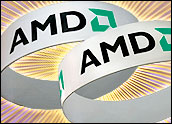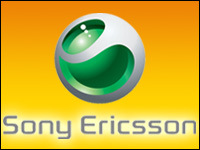
Advanced Micro Devices said Monday that it cut 600 jobs in the third quarter — 100 more than it indicated in the guidance provided to Wall Street early last fall, according to a filing with the Securities and Exchange Commission.
The 100 extra job cuts resulted in US$70 million in restructuring costs, rather than the $50 million the struggling chip company said it would take when the cuts were first announced.
The new cuts could result in additional restructuring costs in 2009, but AMD didn’t put an exact number on those costs.
The $5.2 billion acquisition of ATI Technologies, completed in 2006, continues to be a drag on AMD’s finances, it revealed in Monday’s filing. AMD will take an impairment charge on the acquisition, but did not say how big the charge will be.
The bad news doesn’t end there. AMD disclosed it will also take a $20 million impairment charge on its equity stake in flash-memory chipmaker Spansion.
AMD’s stock closed up 5.24 percent at $2.21 per share on Tuesday.
No Surprise
“AMD has made some very strong statements about its desire to put its fixed expenses in line with its revenue prospects so it can break even or generate cash on an ongoing basis,” Nathan Brookwood, a research fellow at Insight 64, told the E-Commerce Times.
The switch from 500 to 600 job cuts could be due to any number of factors, he speculated.
“Sometimes you offer people incentives to leave,” Brookwood said. “Maybe they were oversubscribed in that — or maybe things were just getting worse than they had anticipated.”
The ATI Deal
The acquisition of ATI and the investment in Spansion have proved troublesome for AMD, Brookwood said, due to a combination of internal execution issues and industry-wide problems in the overall chip market.
ATI makes 3-D graphics chips for PCs, which play a critical role in running video games and scientific-visualization applications. In that regard, ATI competes with graphics chip powerhouse Nvidia, noted Brookwood.
“Right after the acquisition closed, ATI missed a few key development milestones relating to their next-generation 3-D graphics chip,” he said. “As a result, they lost market share in that segment, and Nvidia gained market share. It’s really only a two-player market.”
The tide may have turned for the ATI unit, however.
“Starting in late 2007, ATI got their development programs on track — and at the same time they were getting on track, Nvidia’s train was coming off the rails,” Brookwood said. “In 2008, ATI has been gaining market share, and Nvidia has been losing it. Nvidia had some problems with late development programs, and their fastest chip turned out to be much bigger and use much more power than they had anticipated.”
The Spansion Investment
Spansion makes flash memory and DRAM chips for mobile phones, DVD players, high-definition set-top boxes and MP3 players, just to name a few.
Both the flash memory and DRAM markets are in severe depressions due to massive oversupply, a problem that persists to this day, Brookwood said.
That has led to the write-down in AMD’s investment in Spansion.
“You can buy 2 gigabits of DRAM for your PC for $15, which is just one more dollar than it costs to make the chips,” Brookwood said. “So, everyone is taking a loss on that. The flash market isn’t much better.”
The write-downs of the ATI acquisition and the Spansion investment won’t be a drag on AMD’s operations, however.
“This is all a bookkeeping transaction, and so it has no impact on AMD’s ability to conduct business,” Brookwood concluded.





















































Social Media
See all Social Media